Behind The Scenes With The Baja 1000-Winning Polaris Factory Racing Team
We followed Polaris’ championship-winning UTV team all the way up the Baja California peninsula in a six-figure chase truck.
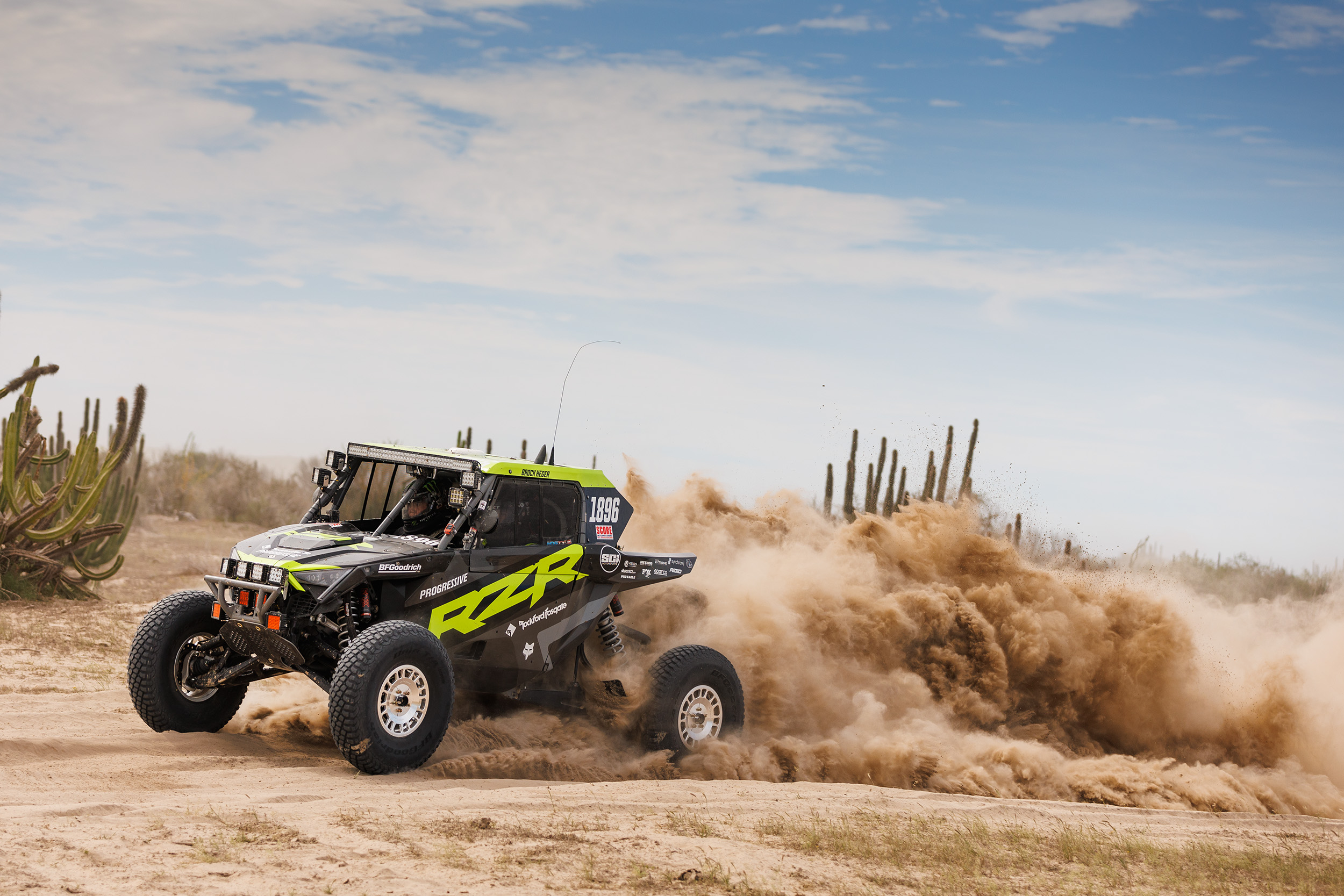
“Please, guys, please. Everything that we’ve accomplished—and everything that we’re going to accomplish in the next two days—will be for nothing if everyone doesn’t come home safe.”
Without context, this could be mistaken for the concerned order of a squad leader speaking to his men before the climactic final assault in a war movie. The man who said it, Adam Arsenault, is actually a Marine Corps veteran. But he wasn’t speaking as a leader of soldiers on the eve of battle; as the masterminding operations manager for the Polaris Factory Racing team, he was addressing the group of approximately 120 volunteers, staff and race drivers who were about to embark on their most challenging and important event of the year: the Baja 1000.
A (Very) Brief History Of The Baja 1000
Those who know nothing about motorsports may still be familiar with the name. The Baja 1000 isn’t just the oldest and most famous of the all-American desert races, but one of the world’s most distinguished off-road races. Held on the Baja California Peninsula in mid-November, the first known iteration of this mad, 1000-mile dash occurred in 1962.
Brothers Bud and Dave Ekins (Bud being the Steve McQueen stunt double who performed the iconic Triumph motorcycle jump in The Great Escape) planned a timed trip down the entire length of the Baja Peninsula on 250cc Honda CL72 Scramblers, partially as a promotional gimmick for the Japanese brand. While Bud wasn’t able to join, Dave and SoCal racer Bill Robertson Jr. completed the 940-mile journey in 39 hours, 54 minutes, generating plenty of press in the process.
By 1967, the brutal desert outing had become known as the “Baja 1000” and established as an official event under the National Off-Road Racing Association (NORRA). After the 1973 oil crisis prevented the annual race from being run for the first and only time in its history, Southern California Off Road Enthusiasts (SCORE) began organizing and sanctioning the Baja 1000.
Under SCORE, the event has ascended to its prestigious position atop the desert racing discipline, attracting millions of fans, amateur and professional racers, and a slew of celebrities, including a 79-year-old Paul Newman who made history as the Baja 1000’s oldest competitor in 2004, Chuck Norris, Grey’s Anatomy star Patrick Dempsey, and Jesse James of Monster Garage fame.
In It To Win It
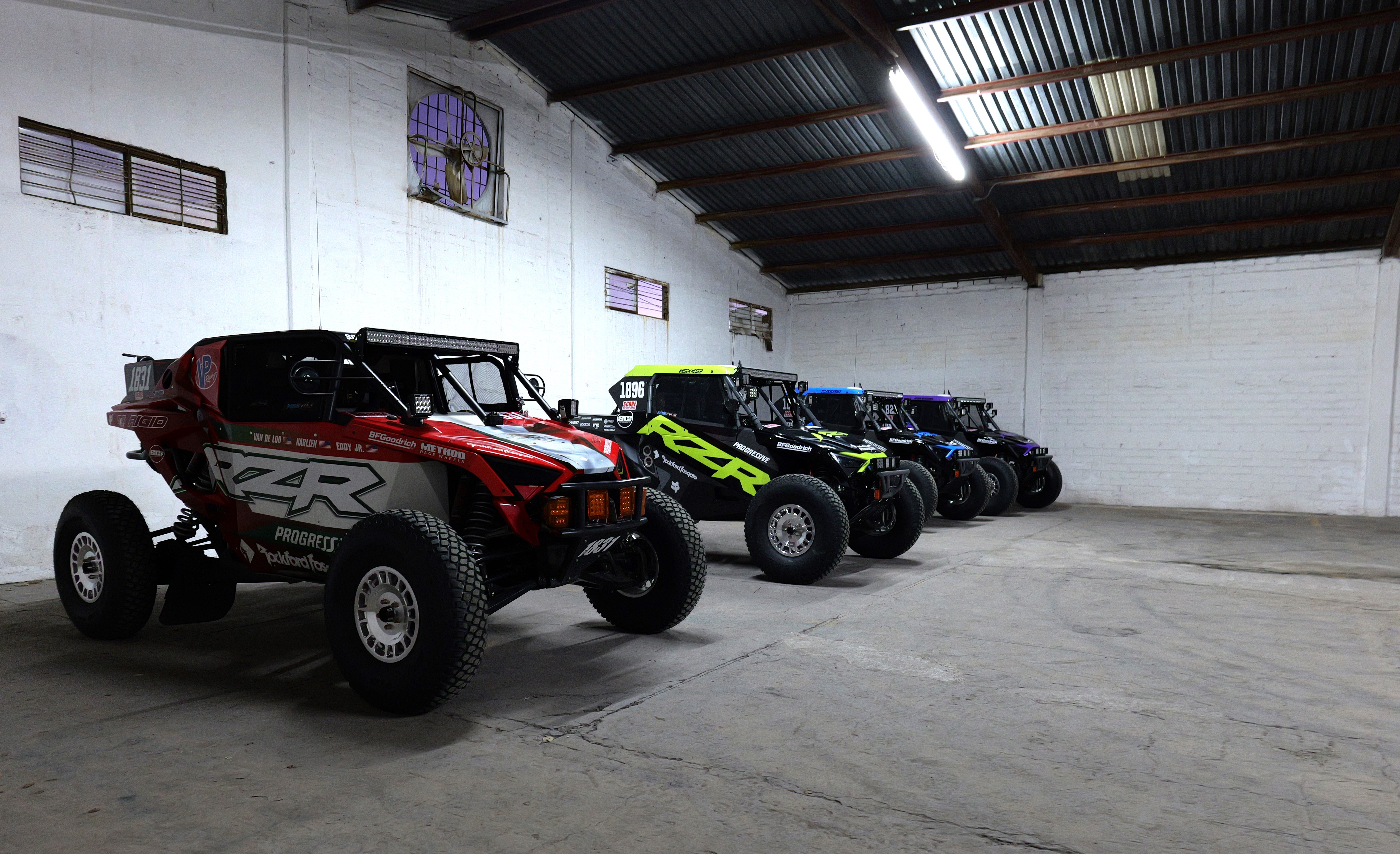
Among the Baja 1000’s many endearing qualities is the fact that anyone can participate. There is no qualification process—entrants simply need to pay a roughly $3,000 entry fee and show up in their choice of trophy truck, car, buggy, motorcycle, quad or UTV. But the Polaris Factory Racing team wasn’t there just to show up; it was there to win the SCORE International UTV Pro Open Class Series Championship. The title would be decided by the Baja 1000, the last and longest race in the SCORE season.
Polaris Factory Racing is the motorsport’s first UTV-class factory racing program. Polaris designed four purpose-built race UTVs based on the RZR Pro R in-house and hand-picked a team to run them, which is something that no other UTV manufacturer has done. The maker of ATVs, UTVs, snowmobiles, and Indian Motorcycles made the decision to form a factory racing program based on the success of previous Polaris-supported independent teams, one of which notably captured an overall win at the 2022 Baja 1000.
Headed into the 2023 Baja 1000, Polaris Factory Racing was in an excellent position to take the title in its inaugural season. The team’s primary drivers, or drivers-of-record, had delivered peak performance throughout the series’ previous three races—the San Felipe 250, Baja 500 and Baja 400. The best results had come from Brock Heger, who transferred his prowess in short-course racing (think: man-made desert obstacles on a closed course) into desert racing dominance with wins at the Baja 400 and Baja 500, thereby securing the championship points lead.
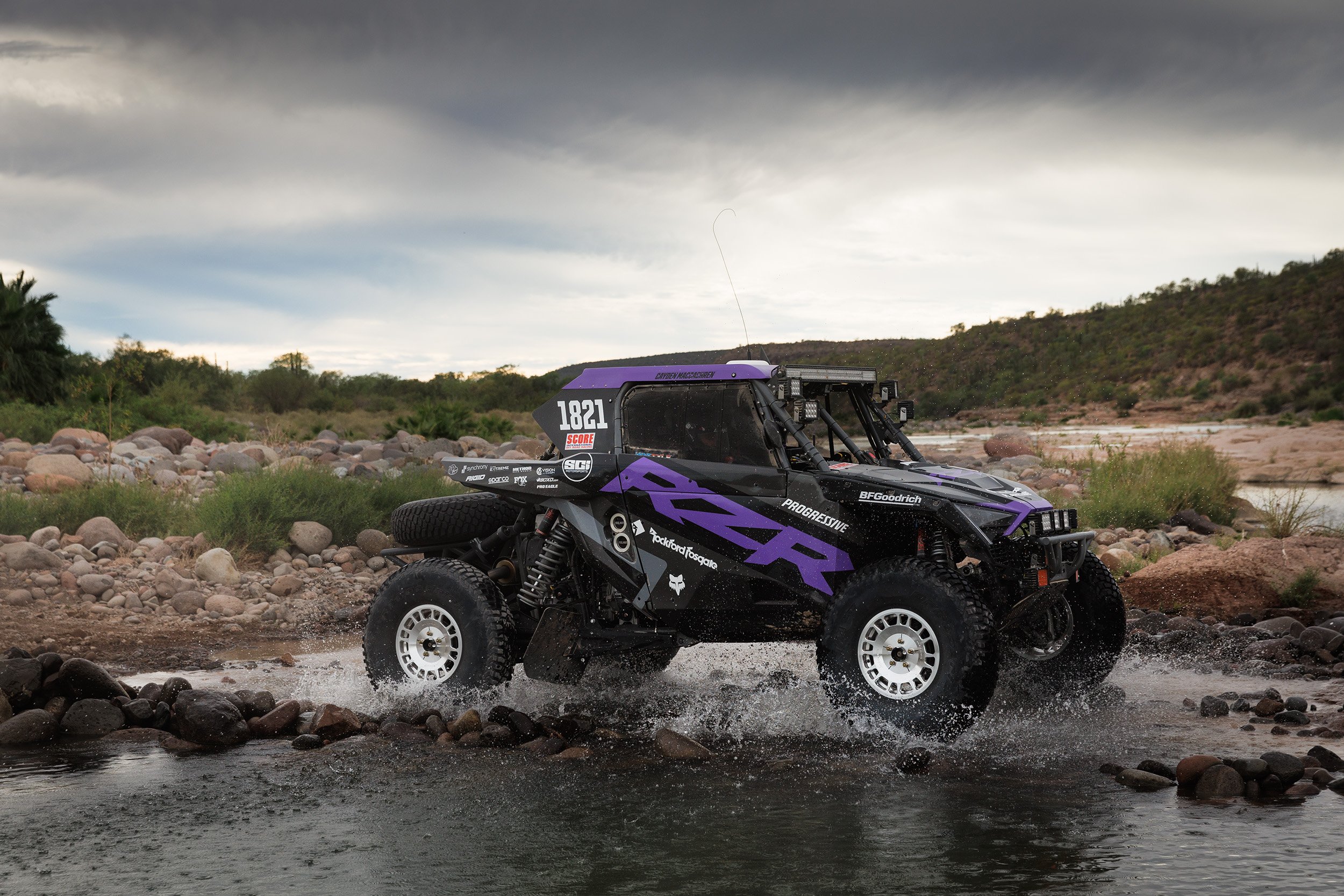
Craig Scanlon, who also serves as one of two team principals, won the season-opening San Felipe 250. Cayden MacCachren, son of Baja 1000 legend Rob MacCachren, had yet to see a podium but notched respectable mid-field finishes in the previous three races. The fourth driver, Dylan Schmoke, served as the longtime co-driver of Austin Weiland, who left Polaris Factory Racing midway through the 2023 SCORE season. Each of these four primary drivers-of-record is also assigned two additional co-drivers. The driver-of-record is required to either start or finish one of three race legs, with the other two co-drivers taking the two remaining legs.
The drivers’ pedigrees are one thing, but the entire Polaris Factory Racing team lineup runs deeper than the most stacked fantasy football roster. Scanlon’s resume is insane, but I’ll note that he’s also a former Polaris executive who, with a pioneering vision for a sporting UTV, helped develop the Polaris RZR in the mid-2000s. Co-team principal Travis Clarke founded a massively successful sports marketing agency, which has represented Travis Pastrana and the late Ken Block. And from the top to bottom, everyone is willing to do whatever is needed at any given time—job titles be damned.
“If I have to go clean the bathroom in the shop, I’m not going to put up a fight,” MacCachren told me. “I’m in for that. Even all the way up to [Clarke] and [Scanlon], they’d do the same. We’re all in this together.”
Team manager and five-time Baja winner Ryan Thomas, who would also serve as one of Scanlon’s co-drivers for the 2023 Baja 1000, added, “We can’t have dead weight. We need guys who are self-sufficient.”
On The Baja 1000 Chase Trail
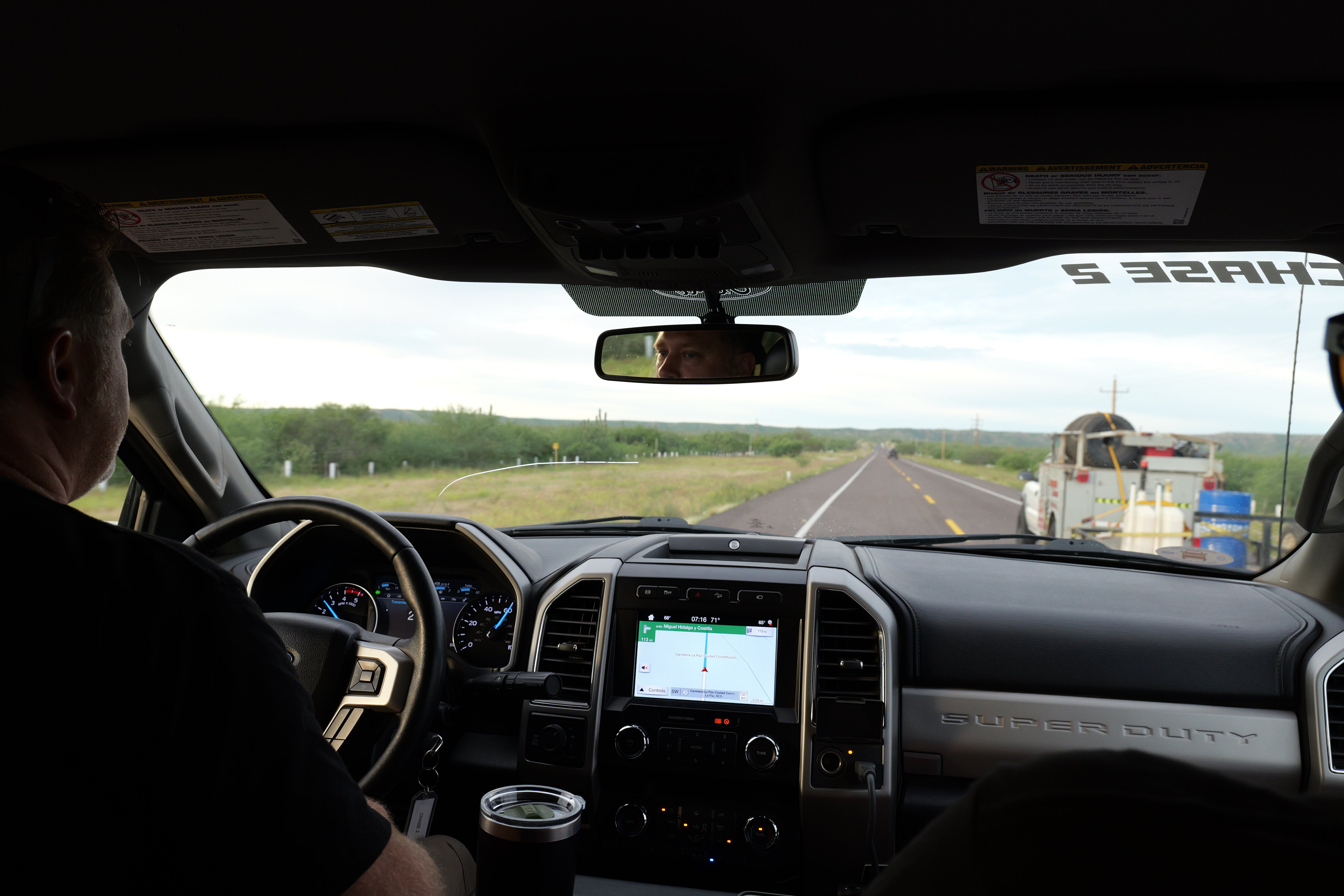
A race this grueling demands that sort of dedication from teams operating at Polaris’ level—especially this year. The Baja 1000’s starting and finishing points, checkpoints, direction, and distance have varied drastically throughout its history, and this year’s point-to-point race course was the second-longest yet at a whopping 1,310.4 miles. For the first time, it ran from the southern starting point of La Paz and bounced around the peninsula in a generally northerly direction to the finishing point in Ensenada, near Tijuana.
My role was that of an observer in a six-figure chase truck—an F-350 Super Duty towing a 16-foot trailer loaded with parts and tools needed to service the UTVs at three pit stops spread across the race course. For communication needs, the cabin was outfitted with an MSAT satellite radio system, Starlink internet connection, and a CB radio for coordinating with the second chase truck following us. The driver of my truck, team pit captain Scott Watkins, had participated in the Baja 1000 in capacities ranging from volunteer grunt to race driver.
“You’re in for a fucking ride,” Watkins told me after I revealed that this is my first desert race experience. “The most dangerous place to be on the Baja 1000 is in a chase truck.”
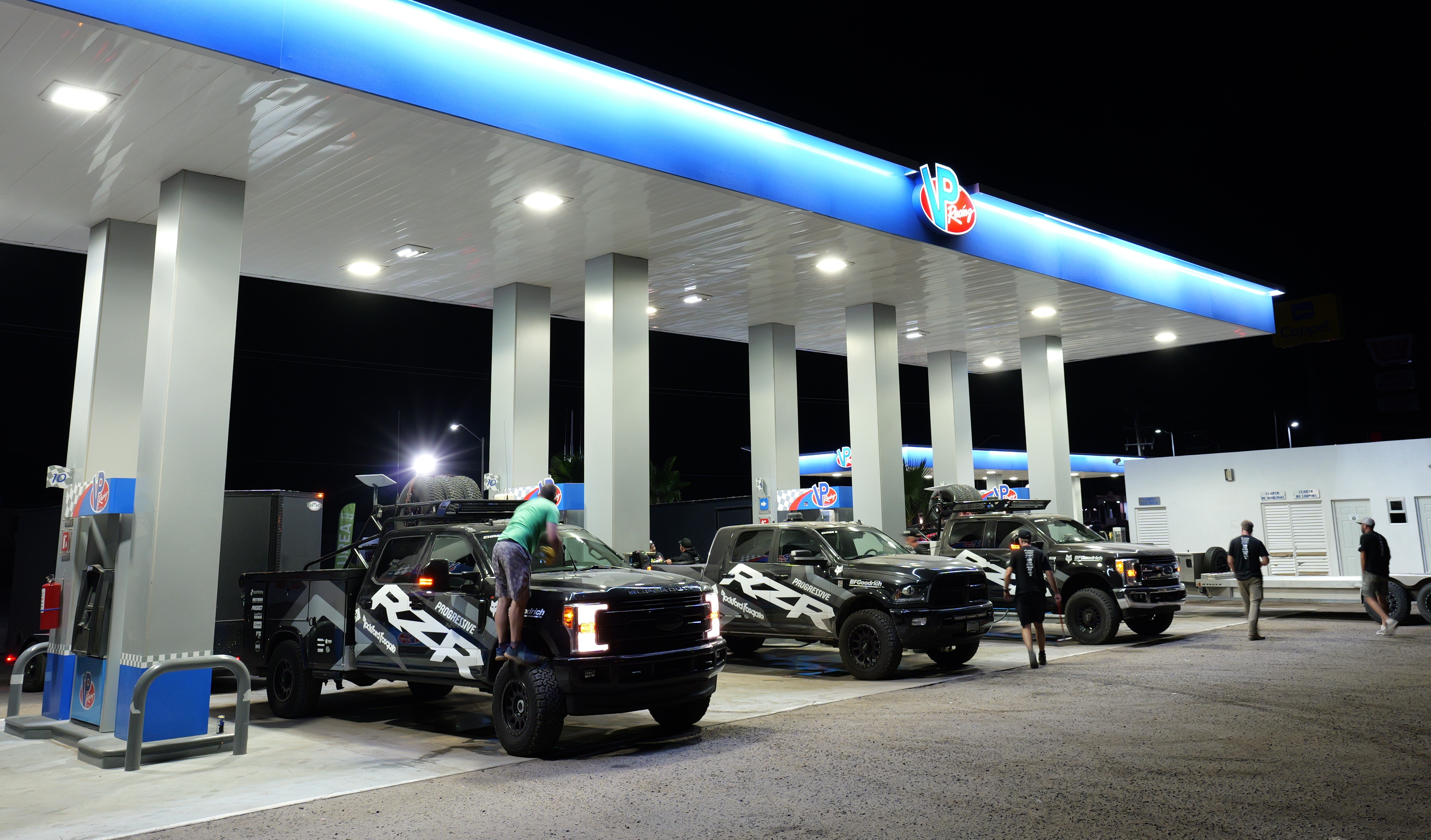
Watkins explained that between the first and second pit stop, we’d be pulling an all-nighter as we crossed hundreds of miles of rural Mexican desert highway and navigated narrow mountain roads. At this point, I realized that the address delivered by Arsenault at the team meeting on the Baja 1000’s eve was directed almost entirely at the chase truck drivers and navigators who’d be competing with the clock to make their pit stops.
“Passion can make people accomplish incredible things, but emotions can cause you to make poor choices,” Arsenault had said. “You may think, ‘I don’t want to let the team down, so I’m just going to pull out and make this sketchy pass around this big rig on a blind corner at night while I’m pulling a trailer and I haven’t slept in two days.’ That is a poor decision.”
We began the first part of our journey—a quick 150-mile jaunt to our first pit stop—shortly after dawn on Wednesday morning, a few hours before the UTV classes crossed the starting line. Almost immediately, another chase-truck challenge presented itself in the form of a Nissan NP300 pickup seen swerving across multiple lanes a few hundred yards ahead of us.
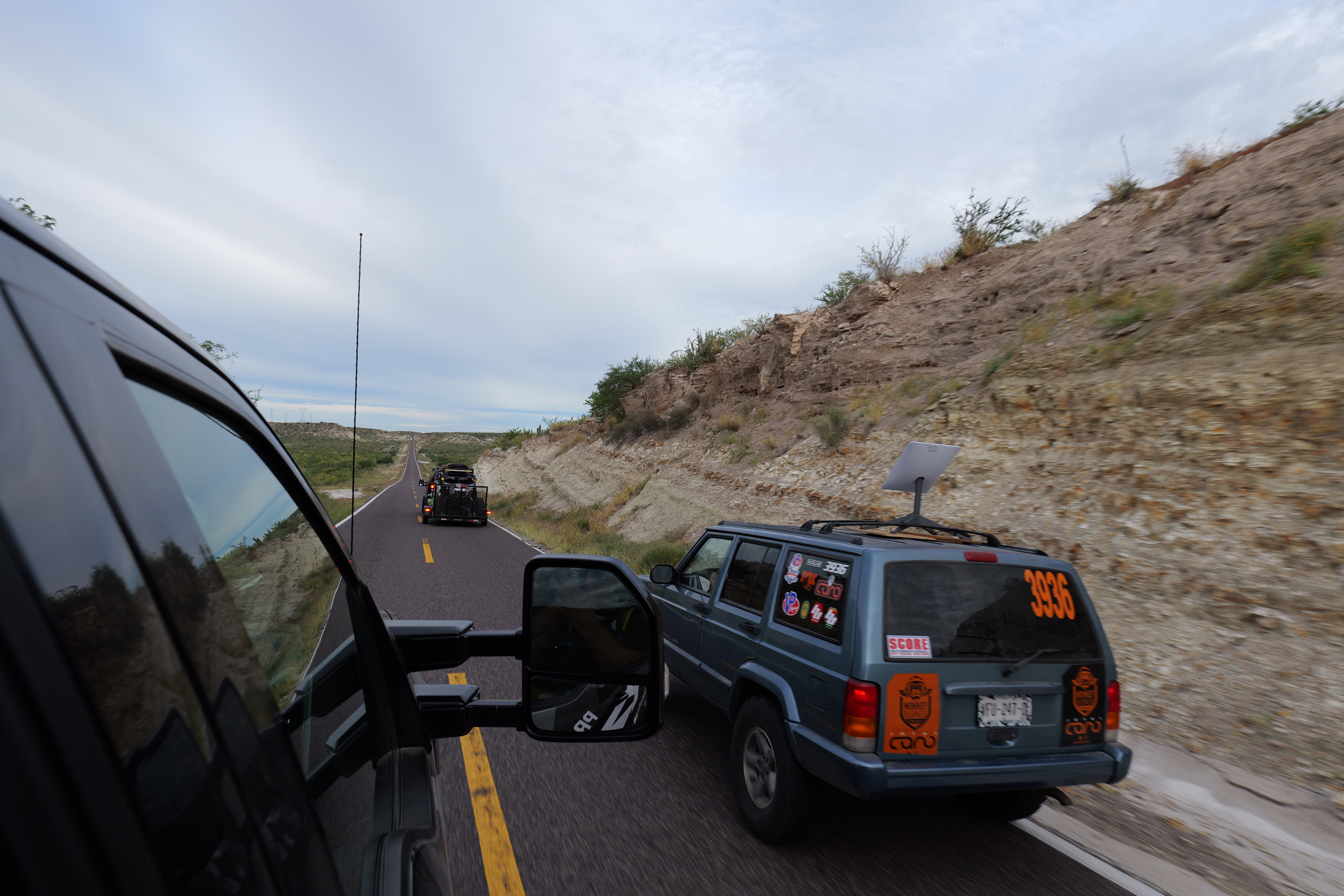
“That’s another problem, the locals in the Tecate zone will drive fucking hammered,” Watkins said. “It’s especially nerve-racking when traveling down a two-lane highway.”
Eventually, the Nissan driver realized that he was blocking our two-vehicle race support caravan and let us pass. Cow strikes are another hazard Watkins said to watch out for—one of Polaris’ other chase trucks was “clinging to life” after a bovine encounter in 2022, he revealed.
As time ticked down to the shot of the UTV Class’ starting gun, Watkins told me that the Baja 1000’s vehicle attrition rate is generally highest at the beginning and end of the race.
“Tons of cars break down in the first 50 miles,” Watkins says. “They’ll roll it into a ditch or whatever because they weren’t pacing themselves and were pushing too hard.” New parts that teams have no way of knowing are faulty will also break in these first miles.
“If you were to cluster the vehicle failures, they happen early on where things get missed, parts fail, or people just get too excited. Or failures happen towards the end when the cars are all clapped out. If we had four cars still running by the end of the race, that would be a pretty good deal.”
The First Pit And The Spectator Circus
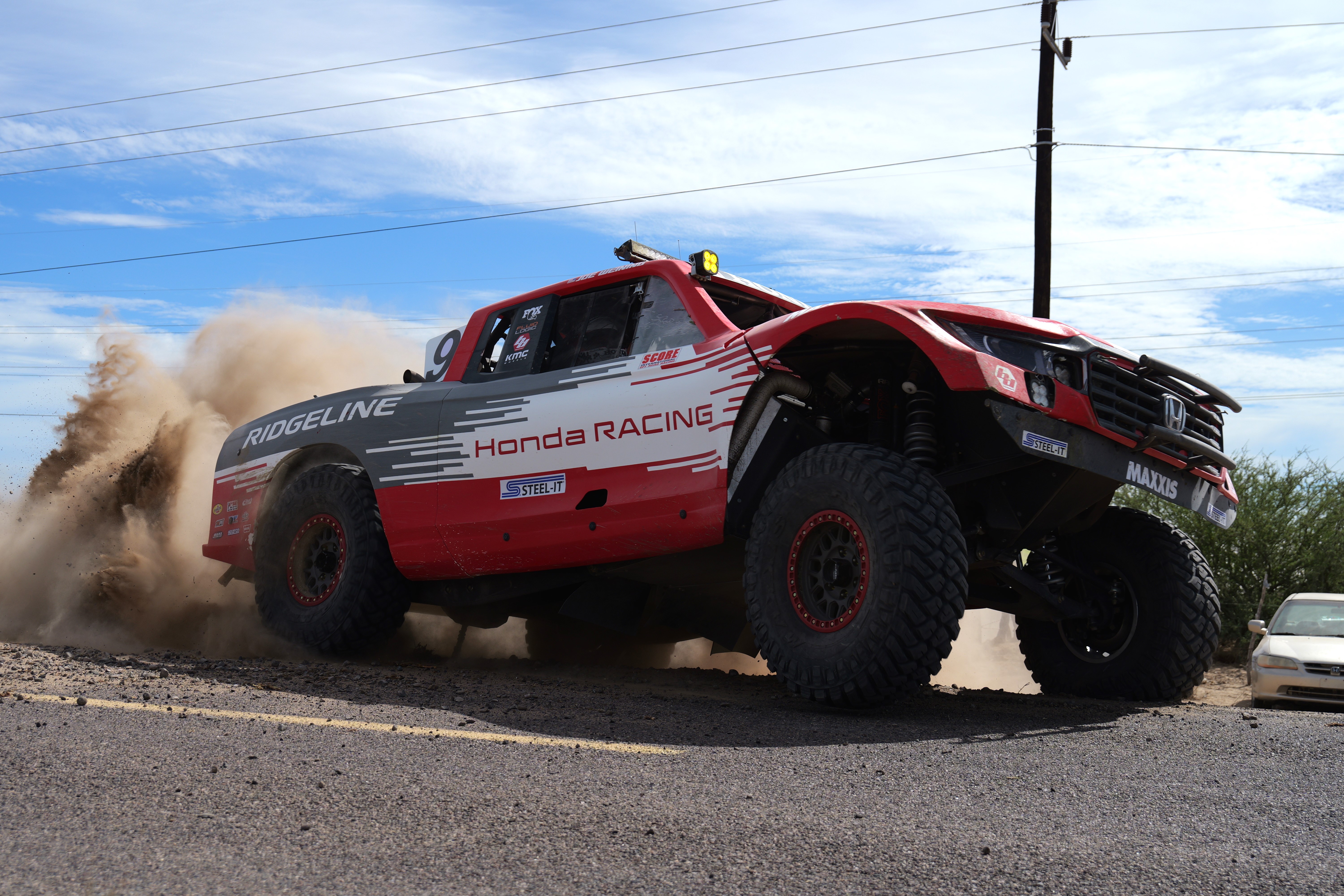
We arrived at our first pit stop, located between race miles 175 and 180. Thousands of spectators and multiple teams lined a mile-long stretch of paved highway traversing between two dirt race course junctures. Watkins found Polaris’ pit stop, and my photographer and I set off to get a closer look.
The scene was one of barely controlled chaos. One juncture consisted of a 90-degree left turn transitioning from dirt to pavement, the boundary of which was marked by a few traffic cones. Every few minutes, police could be heard shouting at a crowd of 40 people who couldn’t help but excitedly encroach on the corner’s boundary in an effort to get as close as possible to the race vehicles. We continued up the dirt stretch before the corner. The stretch was also lined with spectators, including children who were setting up tiny obstacles for the imminently approaching vehicles to smash—the Baja 1000 version of putting pennies on the railroad tracks.
A trophy truck roared by us at over 100 mph, flattening a small toy and creating a miniature dust storm that engulfed everything within 30 feet of the roadsides. Onlookers shouted “Otro, otro!” as more trucks followed. My photographer and I agreed that if we were ever to spectate the Baja 1000, we’d want to be right here among the crowd, not far from our campsite and libations.
Back at the pit stop, the UTVs began rolling through shortly after the trophy trucks. Heger had established the lead in the UTV Pro Open class, but mechanical issues left his car sidelined while mechanics worked furiously to find a fix. Meanwhile, two more Polaris UTVs entered the pits, received new tires and top-offs from a $20,000 Pressure Pro fueling system, and exited in under a minute each. Heger ultimately lost an hour as the crew installed a new clutch and replaced the vehicle’s power take-off unit.
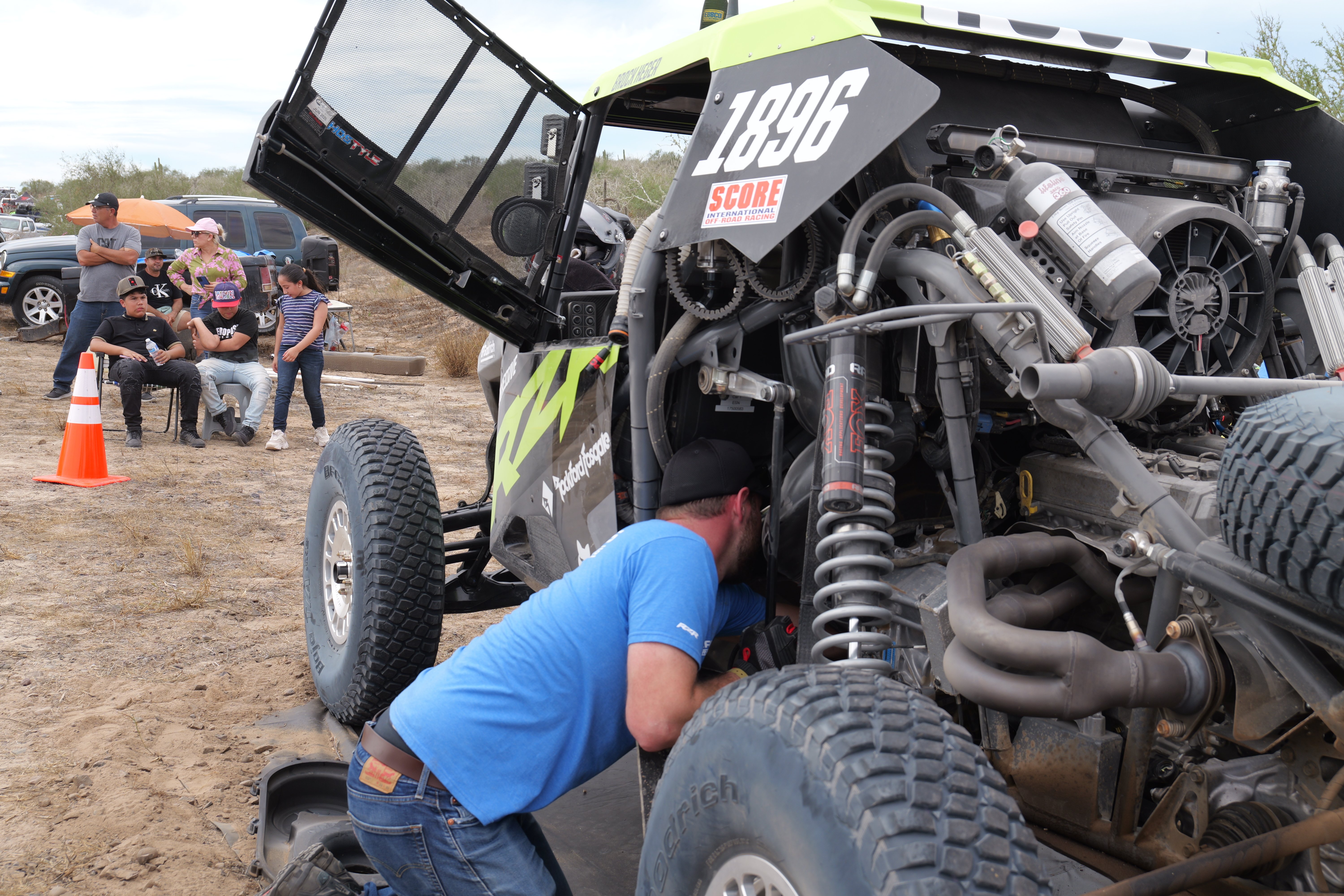
While the vehicles would be checking in at other pit stops throughout the rest of the race, they’d be largely on their own as they navigated the remaining 1,100 miles of tumultuous desert terrain…mostly in the dark. Before the race, MacCachren had cited the sheer distance and nighttime driving as the Baja 1000’s biggest challenges.
“The distance and the time are the hardest parts,” he told me. “You start in the morning, you go into dark, you go into morning again, and you go into the early afternoon to finish. If you look at [24 Hours of] Le Mans, it lasts 24 hours, and there’s a lot of people who think that’s crazy. Well, we’re doing 29 hours at least. And we don’t have very many miles on pavement. And a lot of the miles we do have on pavement, you couldn’t even drive in your daily road car. Obviously, our mile-per-hour speeds are lower [than Le Mans racers’], but our vehicles could do their course slower. Their vehicles couldn’t do anything on our course.”
Like the racers, I was also in for the most intense part of my journey—a 528-mile stretch to our next pit stop. After a stop for chicken and fries at one of the few restaurants that wasn’t closed for the Baja 1000—something of an unofficial holiday in nearby Ciudad Constitución—we proceeded up Mexico Federal Highway 1.
More Roller Coaster, Less Road Trip
It would take some serious skill and focus to navigate a car quickly and safely through the types of twisting and treacherously narrow mountain roads that run through Baja’s Peninsular Ranges. But to do so at night in an F-350 that’s towing thousands of pounds, you have to be skilled, focused, and slightly fucking crazy.
Watkins made it look easy, much in the same way that the fastest race drivers’ movements look the smoothest. It’s important to remember that Watkins is a Baja veteran, and he drove without ever making the type of “poor decision” Arsenault had warned against. I did laugh as I thought of the mask I’d been given to help me fall asleep in the car—that’d be like trying to nap on a roller coaster.
Thanks to Watkins’ expert driving, we were able to stop at Beans and Rice, a restaurant adorned floor-to-ceiling with posters and stickers from race chase crews that’d stopped through over the decades. After dinner, Watkins continued to power through, even passing a pair of all-too-leisurely motorcycles along the way.
Passing The 24-Hour Mark
A couple hours before dawn on Thursday morning, we arrived at our second pit stop, somewhere between race mile 950 and 975. At this point, MacCachren’s car was in second, and Heger’s car was behind by about 12 minutes, in third place. The pit crew’s goal was to refuel the gas tanks, torque the tires and complete a brief inspection, all in around 20 seconds.
While all of that was happening, the drivers of the second leg would hand the baton off to the last-leg drivers who would cross the finish line. One might expect a tense and anxious atmosphere at this crucial moment, but the mood was almost jovial—not as if they weren’t taking it seriously, more like they were confident in the well-oiled machine that had gotten them this far. All they needed to do was continue to trust in the plan that Arsenault had meticulously prepared.
“If you pay attention, you won’t do anything wrong,” I remembered MacCachren telling me before the race. “The only reason somebody does something wrong, in the chase plan or the race plan, is because you didn’t pay attention. It was laid out for you, and you were delivered the tools to do it, and you did it wrong.”
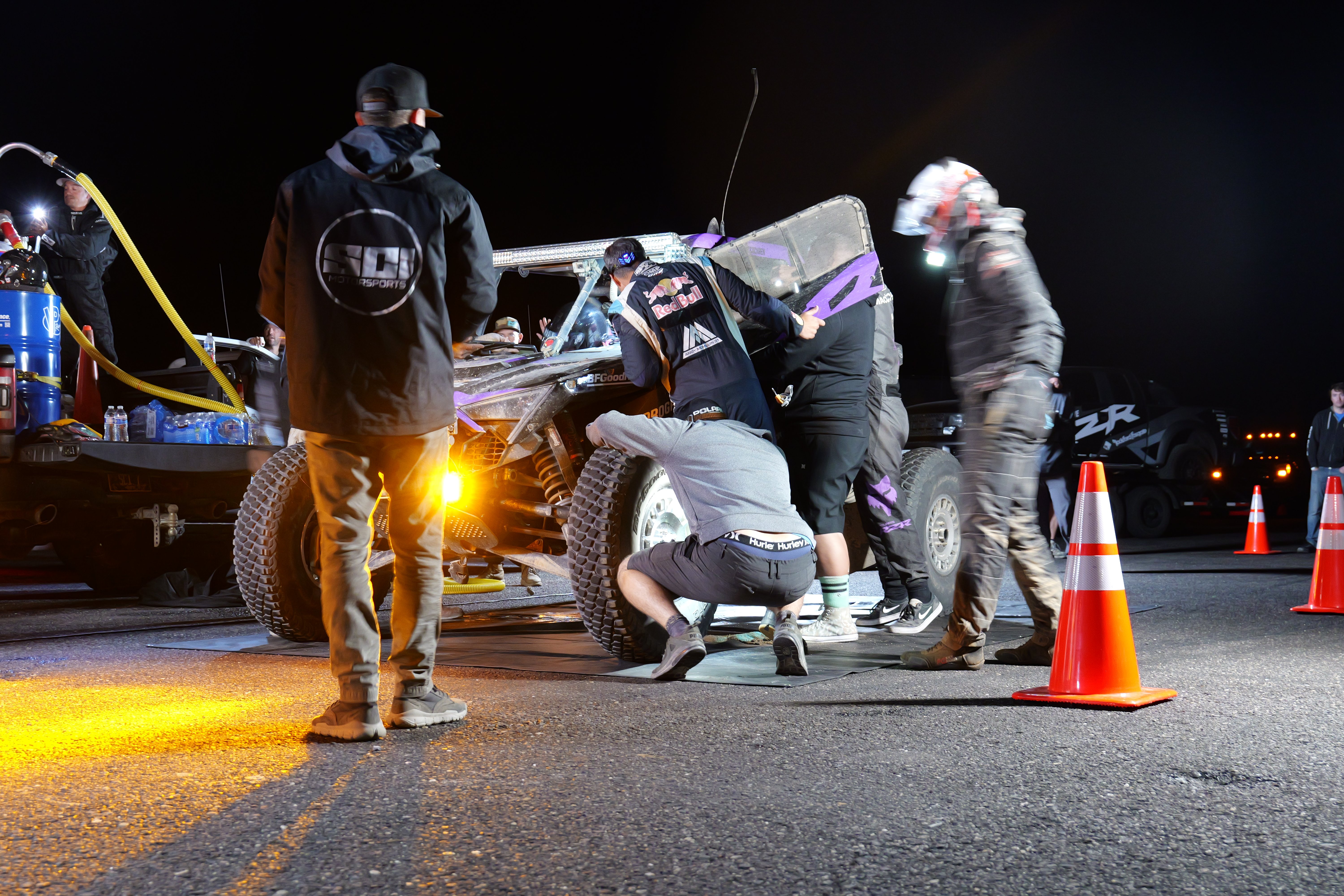
MacCachren and Heger’s cars entered and exited the pit without incident, and we were dispatched to a third pit location at nearby race mile 1,185. The sun crept out, revealing what I remember being azure lakes set in front of the mountain ranges we’d braved the night before. I started to consider pulling out the sleep mask I’d laughed off hours ago. We’d been up for over 24 hours, and the entire crew I was embedded with was tired, including Watkins, who adjusted his safe chase pace in accordance with his levels of sleep deprivation.
“Sleep deprivation is always tough. But it’s hardest when you go in sleep-deprived. When I started running this race in 2007, I didn’t get sleep for two days before I showed up to run,” he recalled of one of his first Baja 1000 experiences. He recounted a moment when he and his navigator both fell asleep while racing, hit a rock, and broke down in the middle of the desert.
The Final Pit And Finish
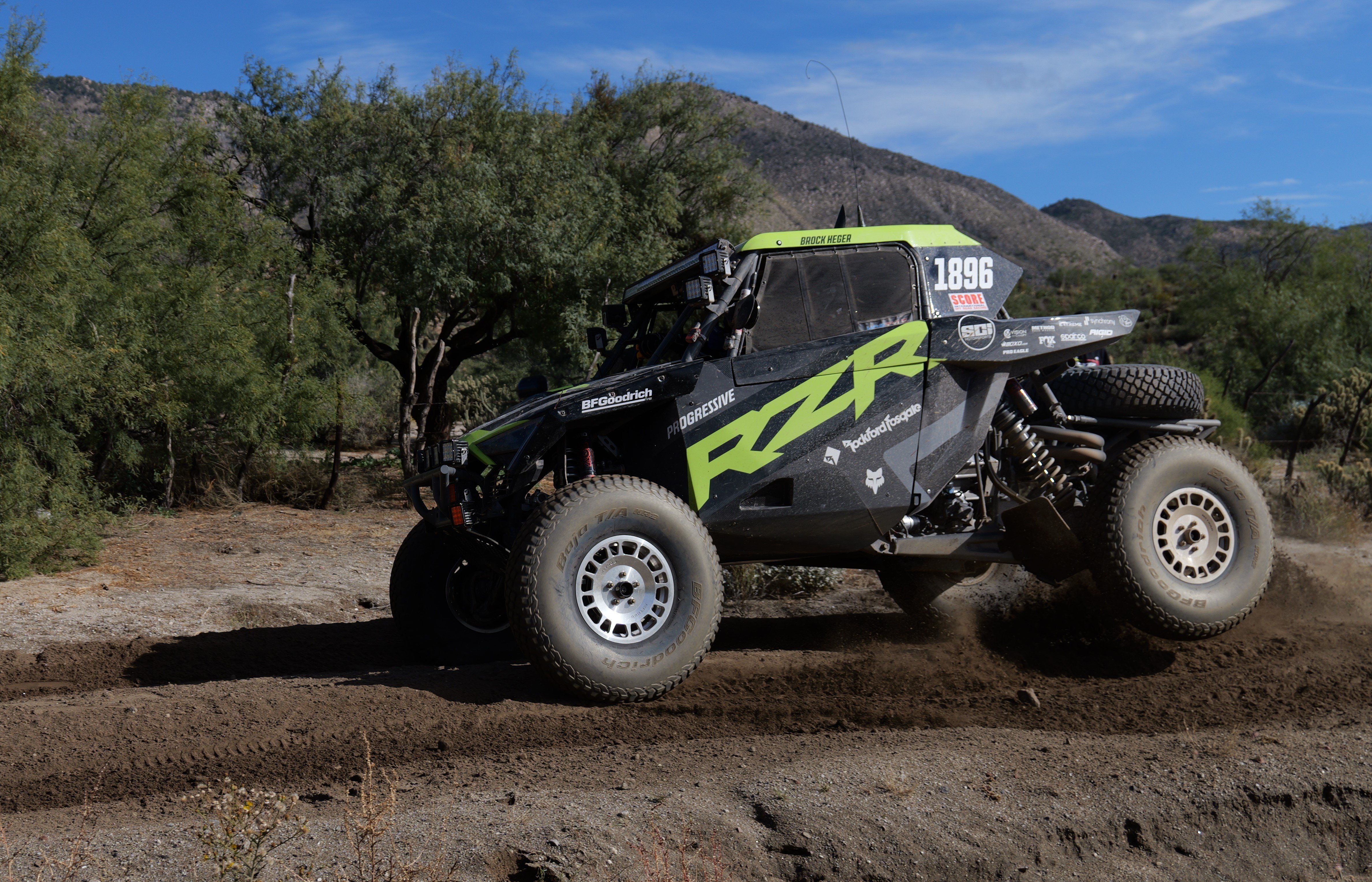
By the time we arrived at our third pit stop, MacCachren’s car had squeezed into first place, and Heger’s car was still not far behind in third. If they finished in these positions, MacCachren would take his first-ever overall Baja 1000 win, Heger would be the UTV Pro Open Class Series champion, and Polaris Factory Racing would have done exactly what it’d set out to do at the beginning of the SCORE season.
This pit stop was unplanned but nevertheless strategic. The location was just outside of a notorious whoops section that’s known to destroy shocks, so we were there just in case. For MacCachren’s car, just in case didn’t come, and Heger’s car got a flat tire changed in 20 seconds without a loss of position. As they breezed past this particularly killer racecourse section with ease, what MacCachren and Heger had told me about the RZR Pro R’s aptitude as a desert racing platform came to mind.
“Polaris innovated the game by coming out with a car that’s not belt-limited,” MacCachren said.
“Polaris really went huge on the clutch size and the belt size to prevent overheating, so we’re able to go 110 miles an hour now on the roads all day here. I’m not just saying that; I have my personal vehicle that I’ve put around 5,000 miles on this year.”
“UTV racing with these new Polaris cars is crazy. In no time, they’re going to be out there beating [SCORE Class-10] cars, no problem. They’re four-wheel drive and we’re doing speeds over 100 mph. It’s kind of crazy that people who don’t know how to drive anything can buy these.”
MacCachren and Heger’s cars maintained their positions, finishing first and third.
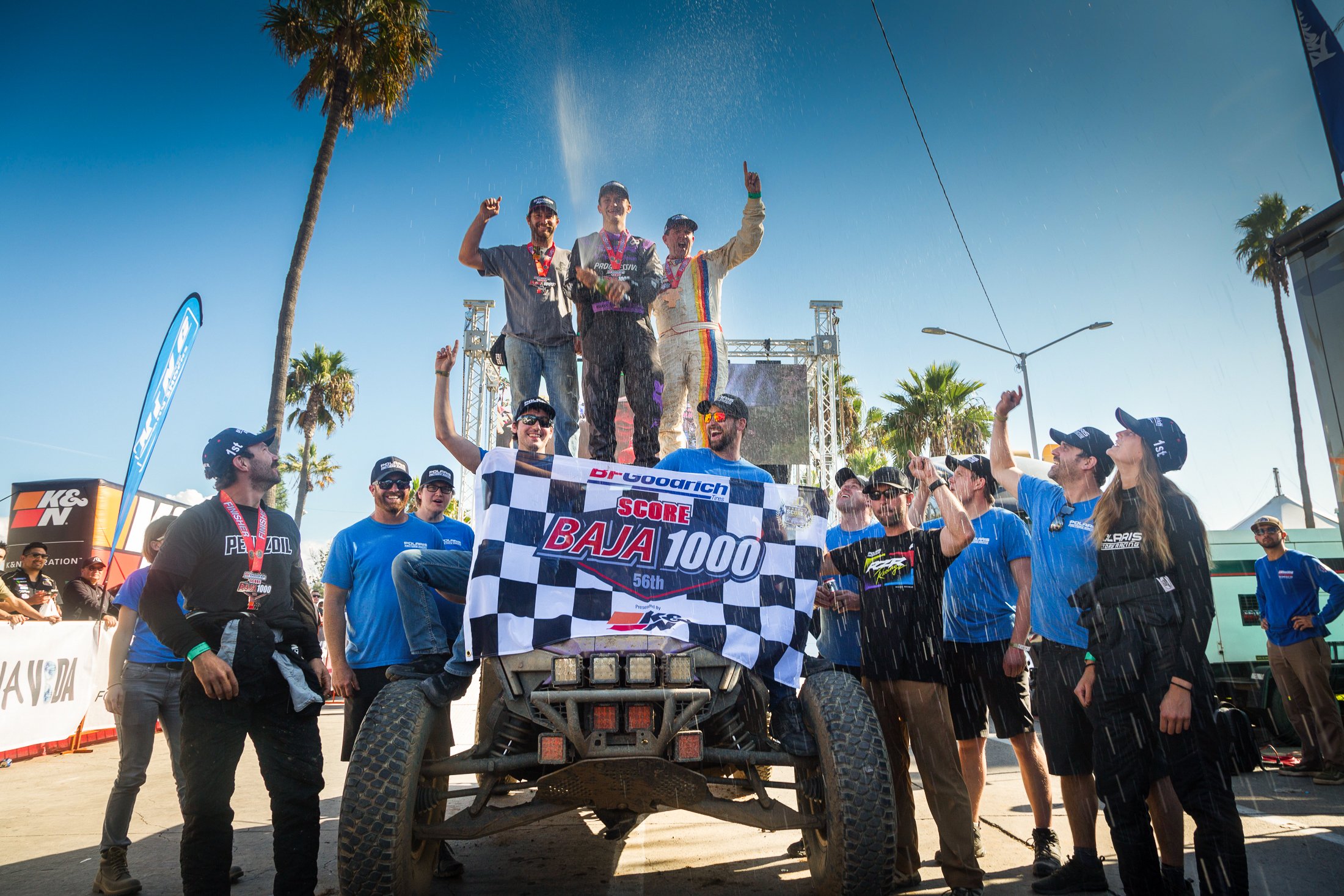
“Today we won a race that most teams dream of even finishing,” MacCachren remarked with admirable humility. “While this win may have my name on it, it’s just as much a victory for my incredible co-drivers Justin [Morgan] and Rhys [Millen], along with the entire Polaris Factory Racing team, and our pit and chase team that worked tirelessly over almost 30 hours to make this win a reality. And through it all, the RZR Pro R Factory was our X-factor—a superior machine to everything else in the field, performing flawlessly against anything the Baja desert threw at us.”
At the time of the medals ceremony, everyone had been up for at least 36 hours. I was dog-tired but elated to see the Polaris team celebrating their fairy-tale ending to the season. I wondered about all of the teams that fell victim to the Baja 1000’s brutal 50 percent average finishing rate. Watkins, who works as a fire captain paramedic in Stockton, provided some personal insight into what keeps people coming back.
“I was pretty hooked just watching Dust to Glory,” Watkins said, referencing the 2005 documentary chronicling the Baja 1000. “I thought, ‘This is right up my alley.’ Everything about it, you know, the extreme challenges, everybody working together for a common goal. These kinds of things align a lot with what I do at work.”
He left me with a compelling sentiment.
“If you work in a cubicle day-to-day, that’s the type of stuff you won’t remember at the end of your life,” Watkins said. “And the extreme challenges, the feeling of everything going wrong in the middle of a desert, will suck while it’s happening. But you’ll remember it for the rest of your life.”
Not only will I remember this, I’m already plotting my next Baja 1000 excursion.
